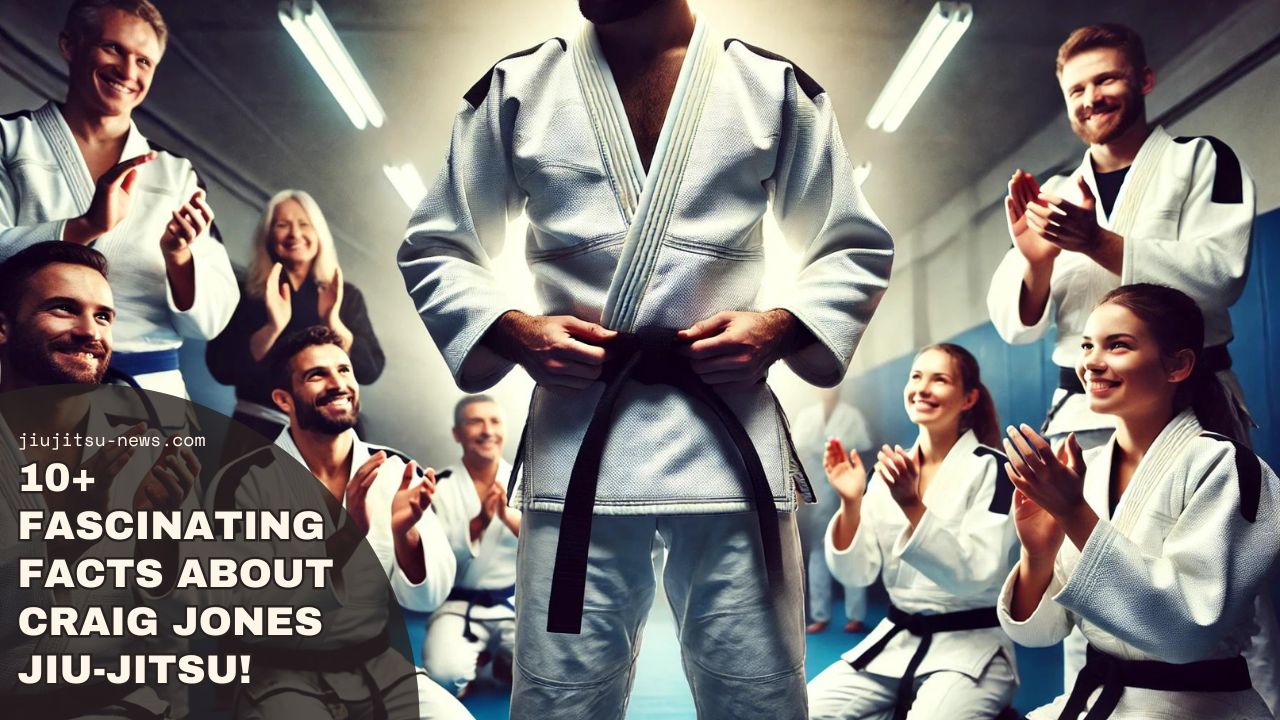
BJJ Belts How Long? Earning each belt in BJJ typically takes around two years of training.
Unlike other martial arts, Brazilian jiu-jitsu students must demonstrate a certain level of skill and knowledge to reach a new rank.
As we progress through this post, we’ll discuss, based on our experience, how long it takes you to get each BJJ belt from white to red. Stay tuned!
How Long Does It Take to Earn Belts in Jiu-Jitsu?
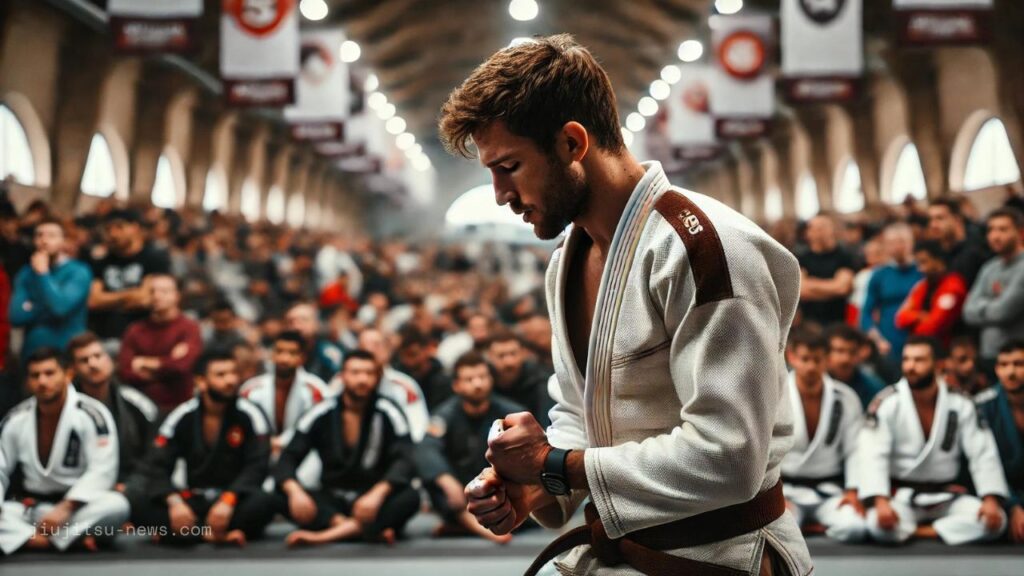
BJJ uses a belt system to indicate a student’s skill level. Belts range from white and blue to purple, brown, and black, with the highest levels being coral and red belts.
The typical timeline for progressing through these belts is as follows:
- White Belt to Blue Belt: ~2 years
- Blue Belt to Purple Belt: ~3-4 years (5-6 years total from white belt)
- Purple Belt to Brown Belt: ~1-2 years (6-7 years total from white belt)
- Brown Belt to Black Belt: ~1-3 years (7-10 years total from white belt)
- Red/Black Belt (7th degree): +35 years of BJJ practice
- Red/White Belt (8th degree): +42 years of BJJ practice
- Red Belt (9th or 10th degree): +52 years of BJJ practice
Note: These timelines are averages and can differ based on various factors such as individual progress, dedication, and prior martial arts experience.
Detailed BJJ Belt Promotion Timeline Breakdown by Belt
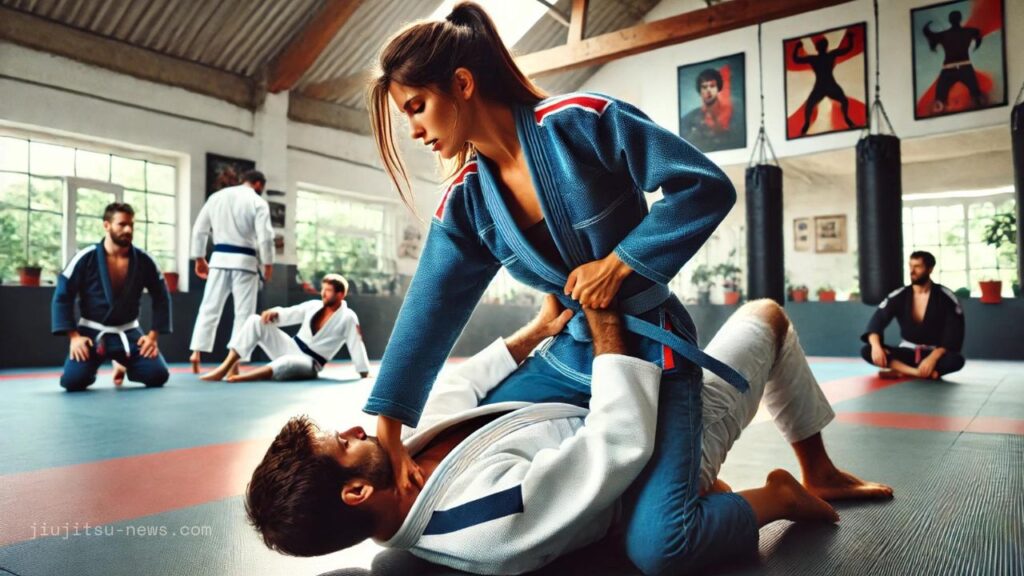
White Belt

The white belt is the starting rank for all BJJ practitioners.
It involves learning the fundamentals of the martial art, including basic movements and techniques.
The time spent as a white belt focuses on building a solid foundation.
Blue Belt
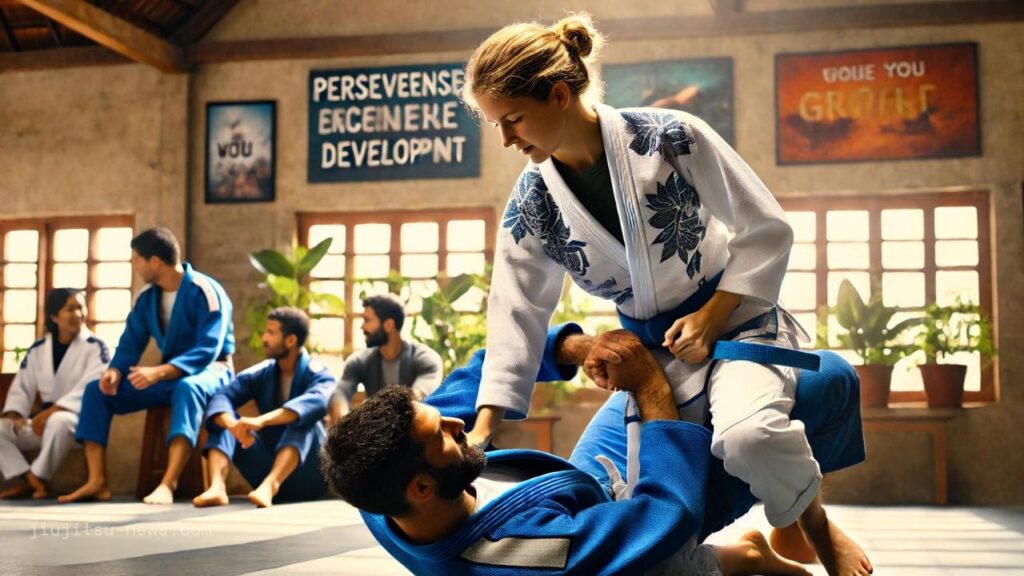
Moving from white to blue belt usually takes two years of dedicated training.
Blue belts understand significant ground positions and fundamental techniques and are starting to develop a personal game.
Purple Belt
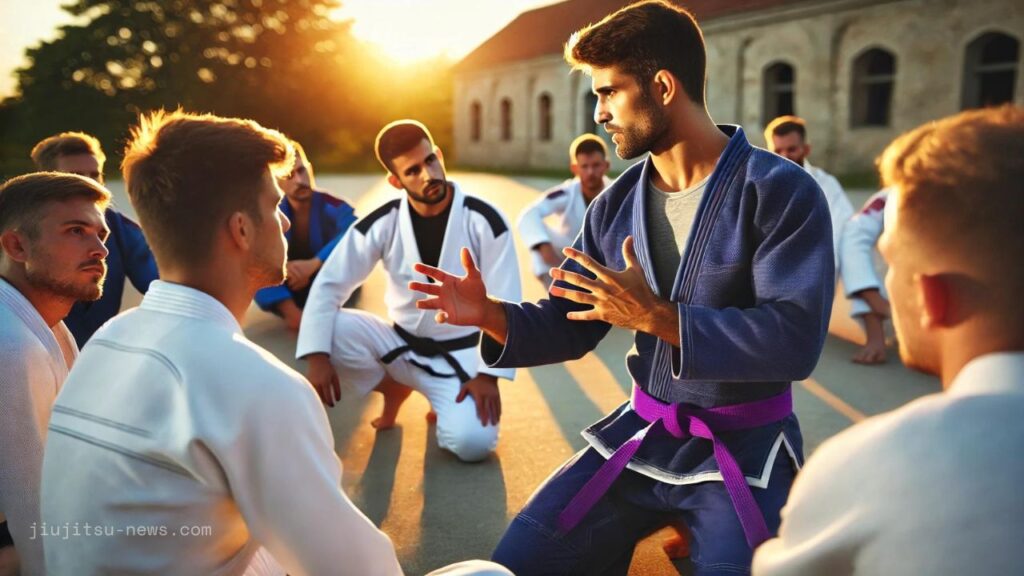
Achieving a purple belt typically requires around six years of training.
This belt represents a stage of deep refinement in technique, with practitioners often beginning to teach lower-ranked students.
Brown Belt
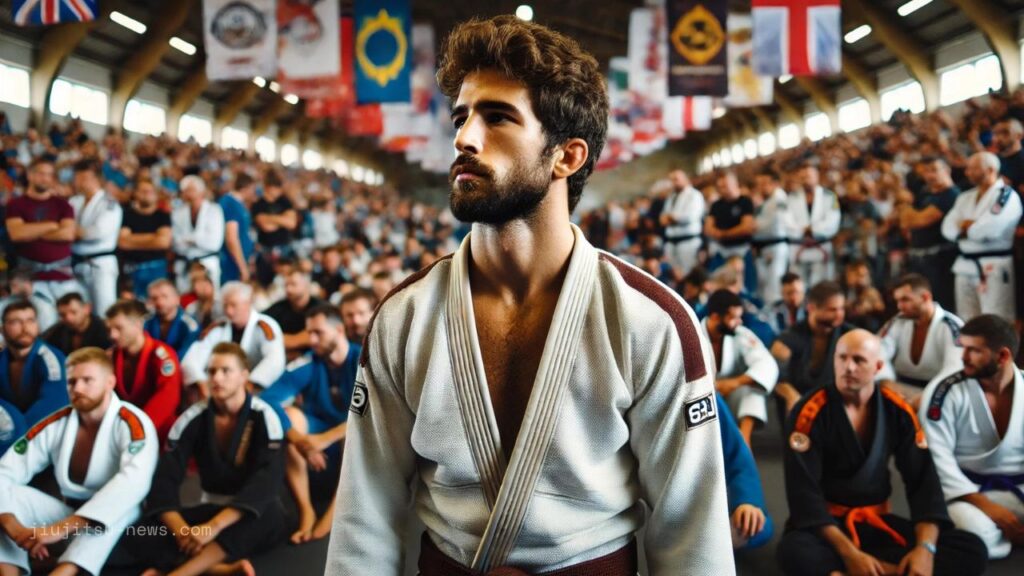
The brown belt is earned after approximately seven to eight years of consistent practice.
Brown belts continue to refine their techniques and add to their competition repertoire, preparing for the black belt.
Black Belt

Achieving a black belt in BJJ can take up to ten years.
For many, reaching this level marks the beginning of their more profound journey in BJJ.
Black belts can earn up to ten degrees over many years of practice.
Red/Black Coral Belt
This 7th-degree black belt can take over 35 years to achieve. Practitioners must remain at this level for at least seven years before advancing.
Red/White Coral Belt
This 8th-degree black belt can take over 42 years to achieve. Practitioners must spend at least ten years at this level before becoming eligible for the red belt.
Red Belt
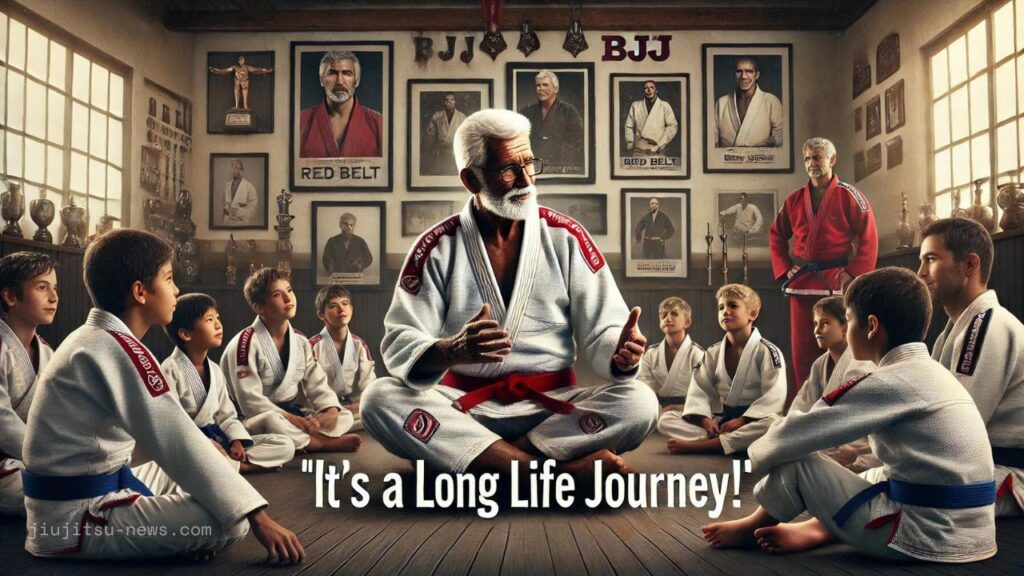
Achieving the red belt, the highest rank in BJJ, can take over 52 years of practice. It denotes a Grand Master with a 9th or 10th-degree black belt.
Why Do BJJ Belts Take So Long?

The lengthy process of earning belts in BJJ is due to the intricate and multifaceted techniques.
These require practical application, skill refinement, mental and emotional resilience, consistent training, and rigorous testing and evaluation.
To maintain high standards, instructors carefully assess each student’s qualifications before considering them for a belt promotion.
Final Thoughts
Brazilian Jiu-Jitsu is a compelling grappling martial art that awards colored belts to represent a practitioner’s expertise.
Advancing in BJJ rank typically requires consistent training over several years, with new belt stripes being added every three to six months of committed practice.
The journey through the belts is a testament to a practitioner’s dedication, skill, and perseverance.
Related: Discover the most economical and low-cost Jiu-Jitsu gis for budget-conscious practitioners. Whether you’re just starting or have been training for a while, this article will help you pick a comfortable, durable, and superb cheap GI.

